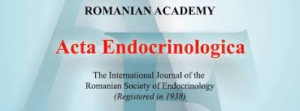Prevalence of Hyperthyroidism in Isfahan-Iran, in the Year 2006, Fifteen Years after Universal Salt Iodization: A Community Based Study
Authors
Ashraf Aminorroaya, Massoud Amini, Silva Hovsepian
Affiliations
- Isfahan Endocrine and Metabolism Research Center, Isfahan University of Medical Sciences, Sedigheh Tahereh Research Complex, Khorram Street, Isfahan, 8187698191, Iran. aminorroaya@med.mui.ac.ir.
Abstract
Abstract: The objective of this study was to investigate the prevalence of hyperthyroidism in Isfahan, a centrally located city in Iran, fifteen years after universal salt iodization.
In a cross-sectional study, 2523 Isfahani adult people (aged >20 years, 1275 men and 1248 women) were selected by multistage cluster sampling method. TSH was measured in all (n=2523) and urinary iodine concentration (UIC) in one fourth of participants. Those
with low TSH <0.3 mIU/L were recalled and re-tested (n=115). Low TSH with normal FT4I and T3 at the second measurement was considered as subclinical and low TSH with high FT4I or T3 as overt hyperthyroidism. TPOAb, TgAb and UIC were measured in hyperthyroid patients and controls. The prevalence of hyperthyroidism was 1.8 % (n=46): overt-0.8% (n=21) and subclinical hyperthyroidism 1.0% (n=25). Hyperthyroidism was observed in 2.6% of women (n=32) and 1.1% of men (n=14) (OR= 2.4, CI 95%: 1.3-4.5, P=0.006). Iodine deficiency and excess were observed in 21.4% and 18.7% of all population, being 38% and 33% in hyperthyroid patients, respectively (P>0.05). Thyroid function had no statistically significant correlation with iodine intake status. Nobody had UIC more than 100 µg/dl. The prevalence of positive TPOAb and/ or TgAb was 54.5% and 29.2% in hyperthyroid and euthyroid people, respectively (OR= 2.9, CI 95%: 1.2-7, P=0.01).
Conclusions: The rate of hyperthyroidism in our region was similar to iodine sufficient
areas. Its development is not a direct effect of iodine intake. Antithyroid autoimmunity may
have a role.
Key words: Hyperthyroidism, Iran, iodine, autoimmunity.
In a cross-sectional study, 2523 Isfahani adult people (aged >20 years, 1275 men and 1248 women) were selected by multistage cluster sampling method. TSH was measured in all (n=2523) and urinary iodine concentration (UIC) in one fourth of participants. Those
with low TSH <0.3 mIU/L were recalled and re-tested (n=115). Low TSH with normal FT4I and T3 at the second measurement was considered as subclinical and low TSH with high FT4I or T3 as overt hyperthyroidism. TPOAb, TgAb and UIC were measured in hyperthyroid patients and controls. The prevalence of hyperthyroidism was 1.8 % (n=46): overt-0.8% (n=21) and subclinical hyperthyroidism 1.0% (n=25). Hyperthyroidism was observed in 2.6% of women (n=32) and 1.1% of men (n=14) (OR= 2.4, CI 95%: 1.3-4.5, P=0.006). Iodine deficiency and excess were observed in 21.4% and 18.7% of all population, being 38% and 33% in hyperthyroid patients, respectively (P>0.05). Thyroid function had no statistically significant correlation with iodine intake status. Nobody had UIC more than 100 µg/dl. The prevalence of positive TPOAb and/ or TgAb was 54.5% and 29.2% in hyperthyroid and euthyroid people, respectively (OR= 2.9, CI 95%: 1.2-7, P=0.01).
Conclusions: The rate of hyperthyroidism in our region was similar to iodine sufficient
areas. Its development is not a direct effect of iodine intake. Antithyroid autoimmunity may
have a role.
Key words: Hyperthyroidism, Iran, iodine, autoimmunity.

